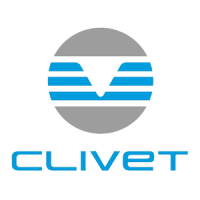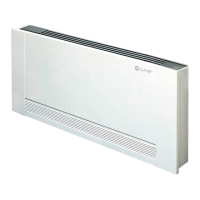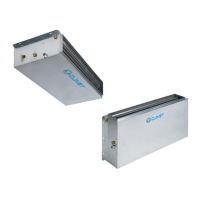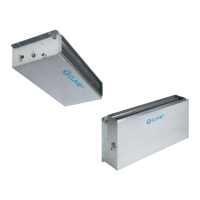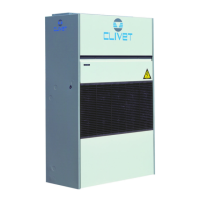
Do you have a question about the CLIVET CF-V Series and is the answer not in the manual?
| Brand | CLIVET |
|---|---|
| Model | CF-V Series |
| Category | Touch terminals |
| Language | English |
Details about the serial number label and its location on the unit.
Importance of the serial number for unit identification and tracing.
Guidance for users on essential manual information and its purpose.
Essential instructions for unit operation and safety adherence.
Specifies that installation and maintenance must be done by qualified personnel.
Covers additional safety advice and relevant certifications like CE mark.
Highlights areas around the unit where only authorized personnel may operate.
Outlines common risks like burning smells, contact with components, and maintenance errors.
Details hazards associated with electrical connections, grounding, and live parts.
Procedure for checking the unit for damage or deficiencies upon arrival.
Recommendations for storing the unit to maintain its integrity.
Instructions and precautions for safely lifting and moving the unit.
Factors to consider for installing air-conditioning systems.
Importance of maintaining specific spaces for unit operation and maintenance.
Specific advice on where to position the unit for optimal performance and safety.
Guidelines for piping design, bends, head variations, and system pressure.
Procedures to prevent freezing and how to empty the water circuit.
Proper connection and management of condensate drainage.
Requirements for duct design, insulation, and airflow for optimal performance.
Requirements for electrical lines and personnel qualifications.
Technical specifications for unit power supply and current/power ratings.
Step-by-step instructions for connecting the unit to the power supply.
Essential checks before and during start-up for all systems.
Specific checks for the electrical system during start-up.
Verifying tensions, absorptions, and set-points post start-up.
Local and remote management of the unit via thermostat or RS485.
Automatic, manual, ECO modes, and set-point adjustments.
Explains automatic mode switching logic for 2-pipe units.
Importance of clean filters for thermal exchange and unit performance.
Instructions for cleaning and replacing pleated air filters.
Procedure for cleaning the condensate discharge to prevent obstructions.
Details on scheduled inspections, frequency, and key checks.
Information on regulatory compliance for pressure equipment.
Procedures for handling periods of inactivity and winter protection.
Steps for safely disconnecting the unit, including refrigerant recovery.
Guidelines for proper dismantling and disposal according to standards.
